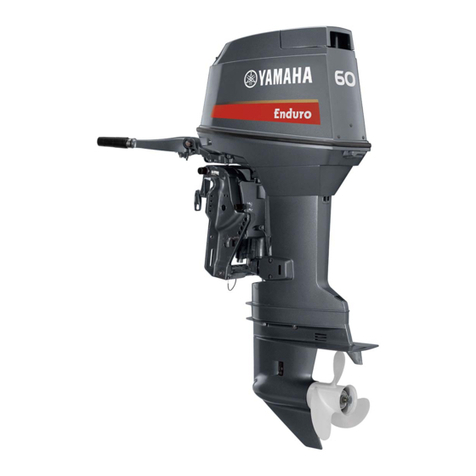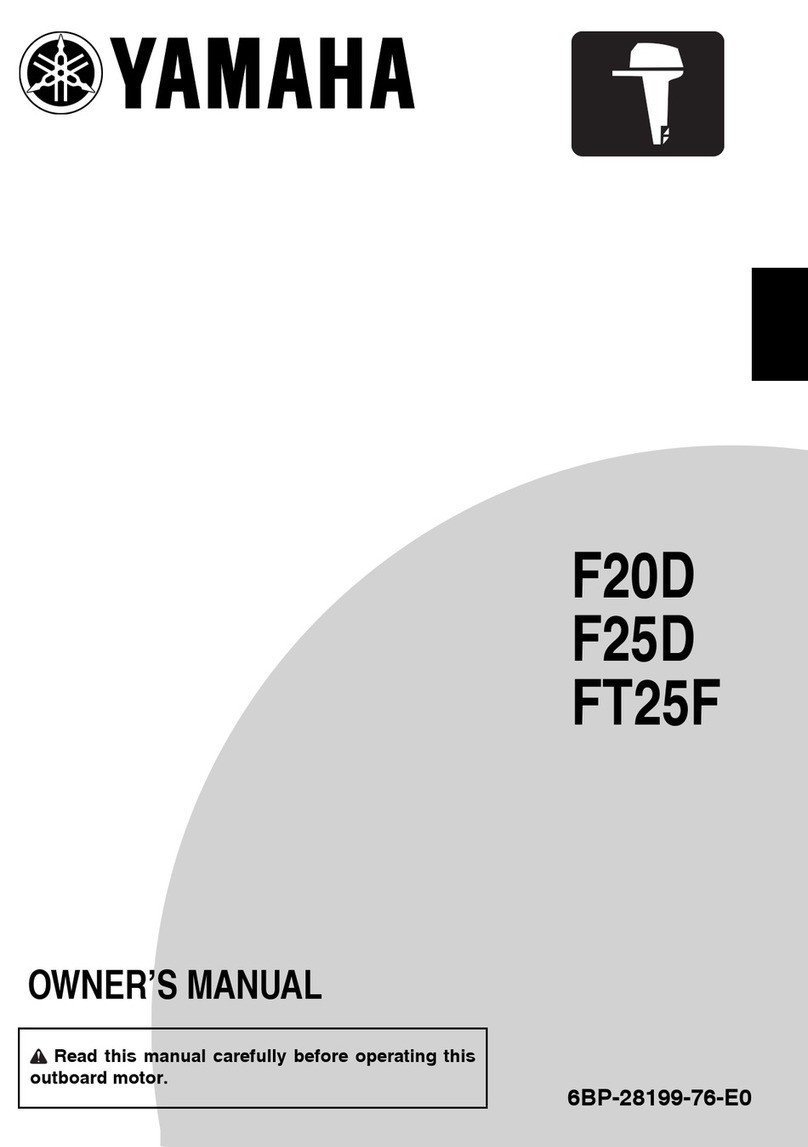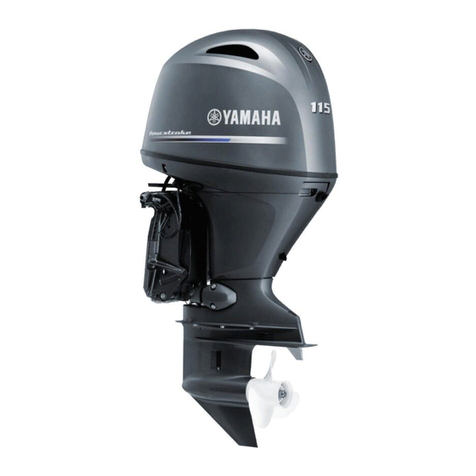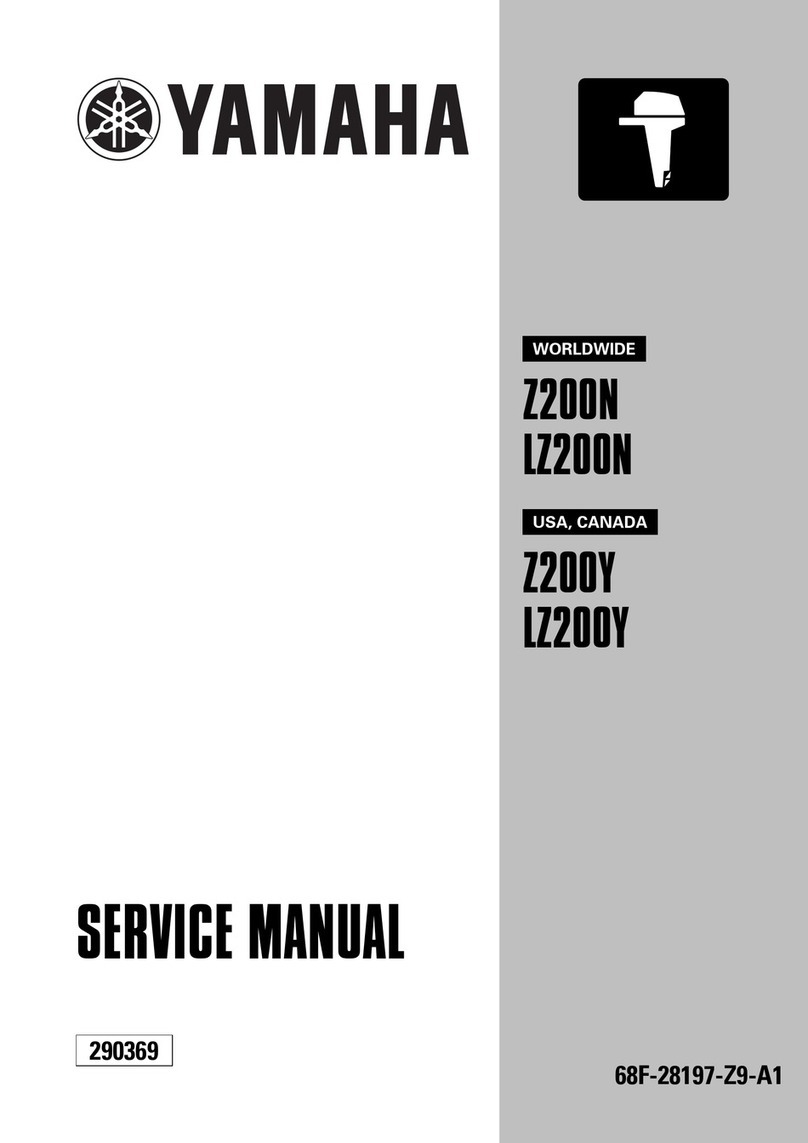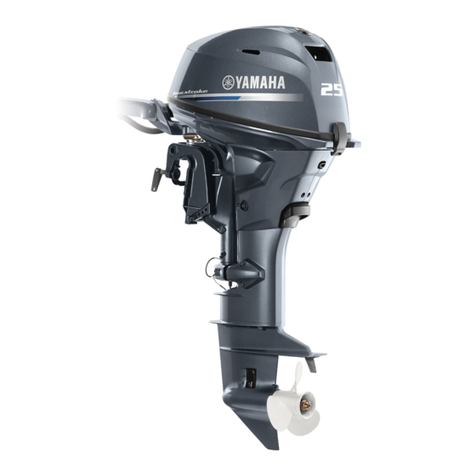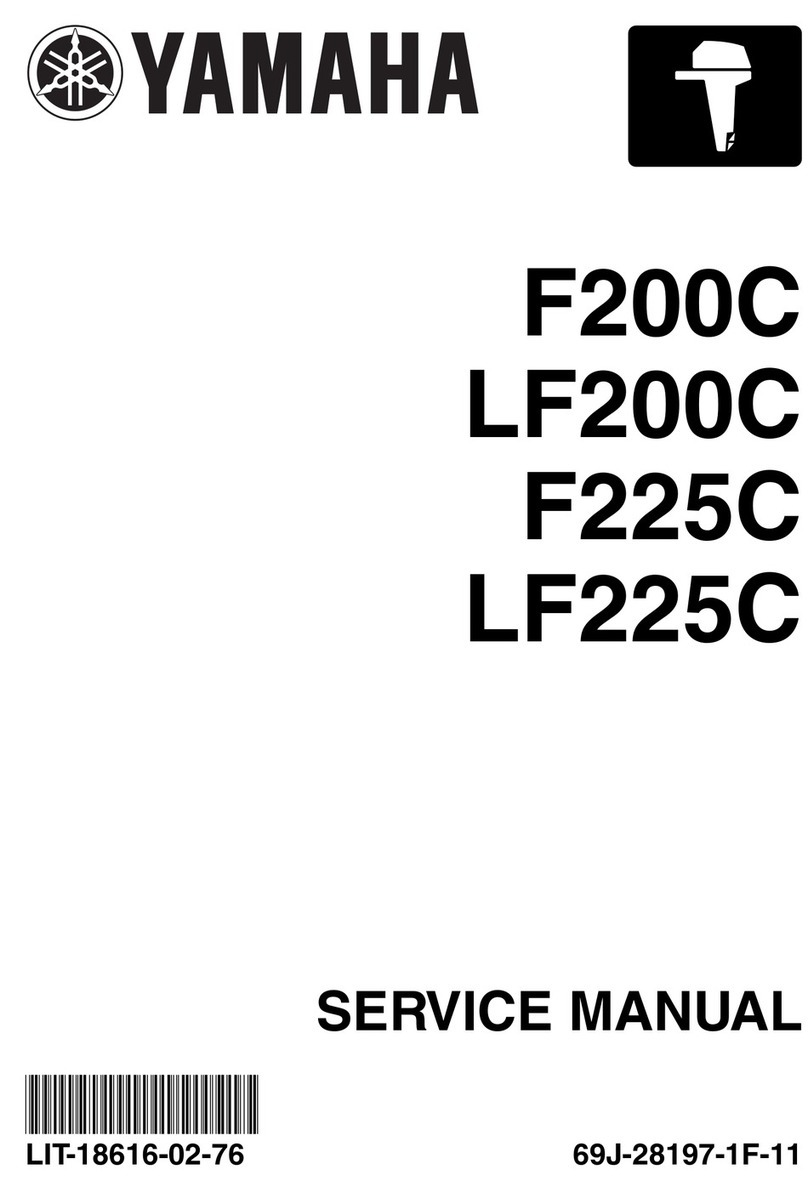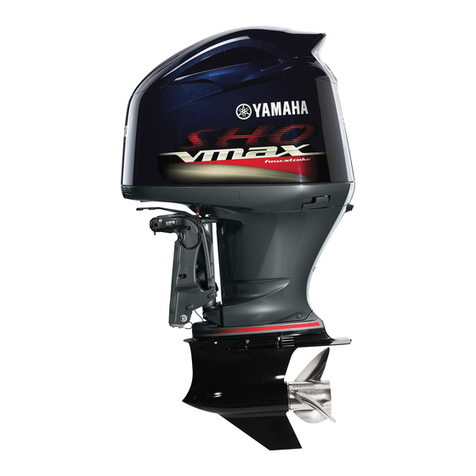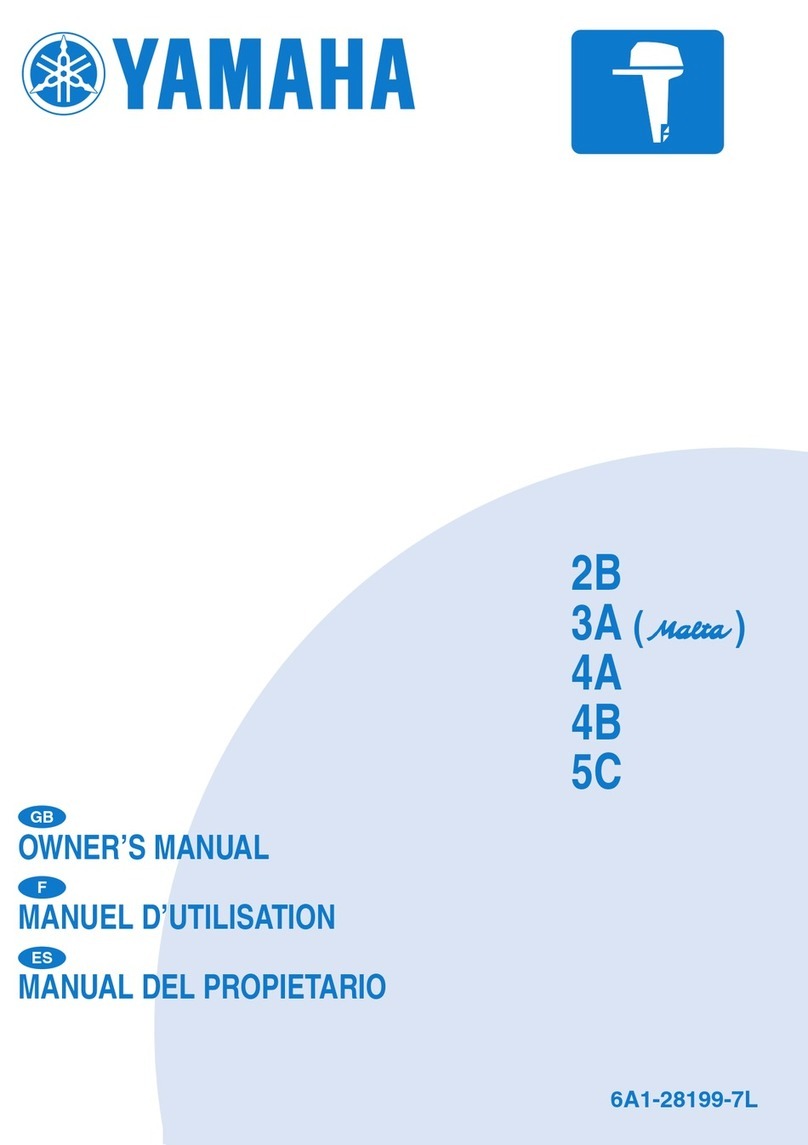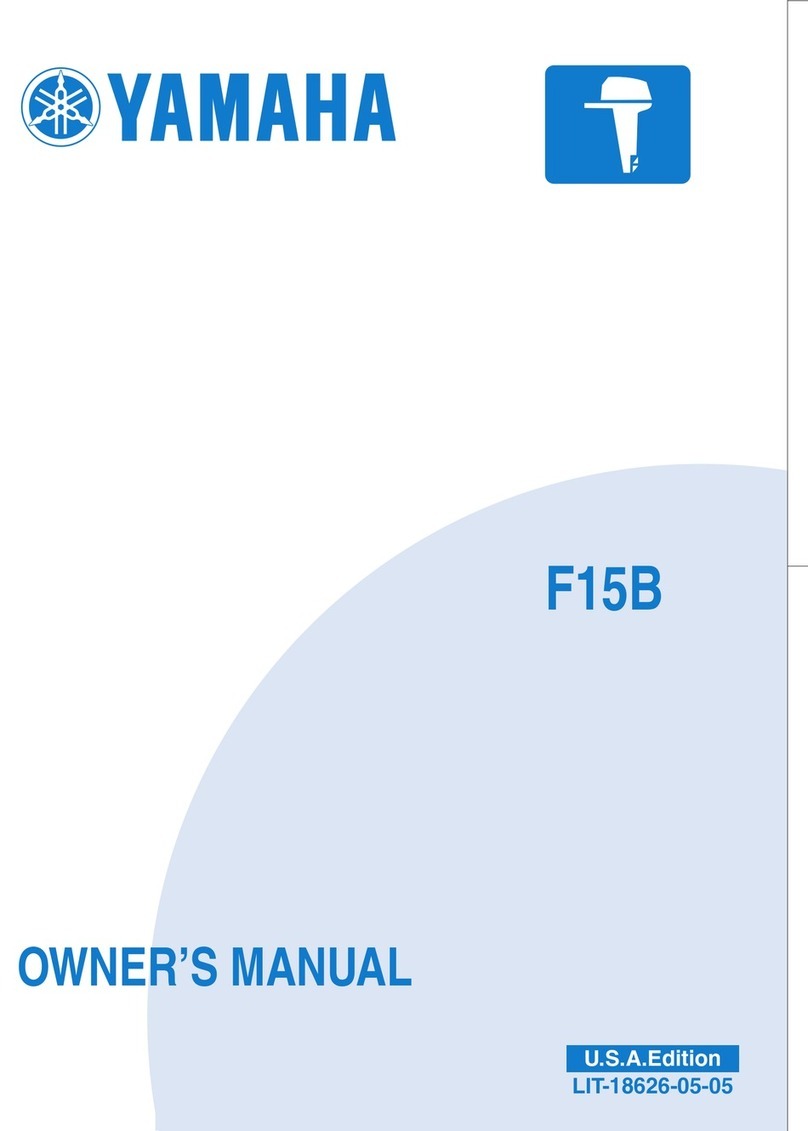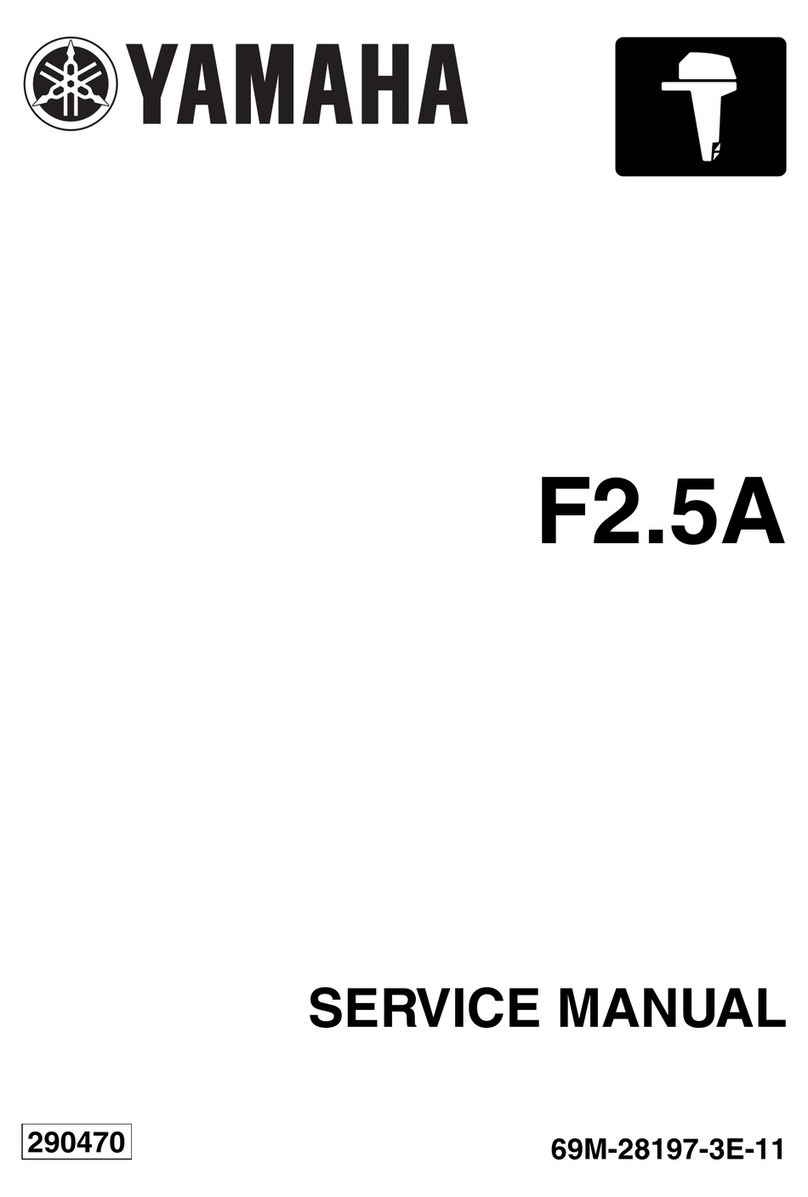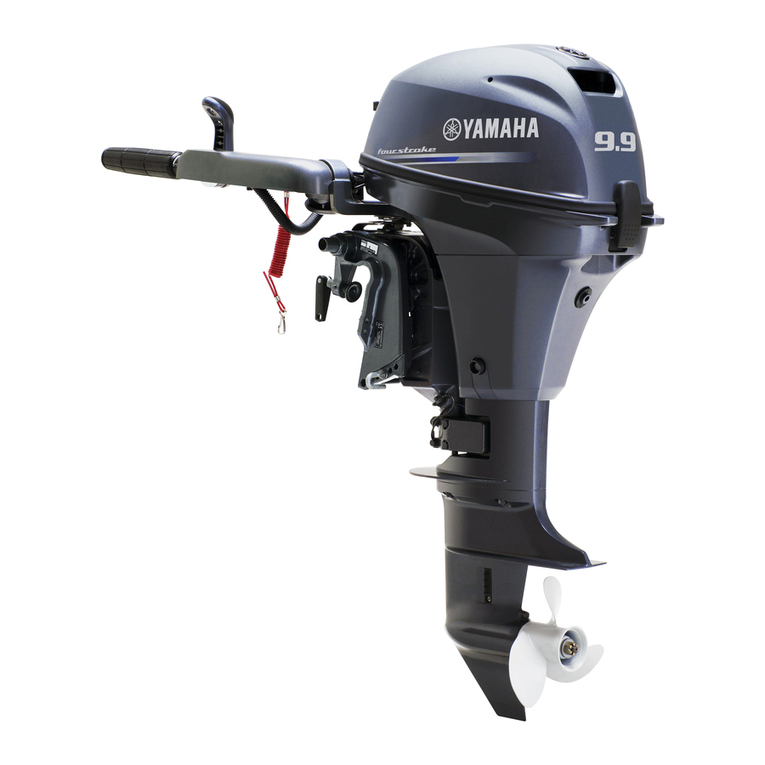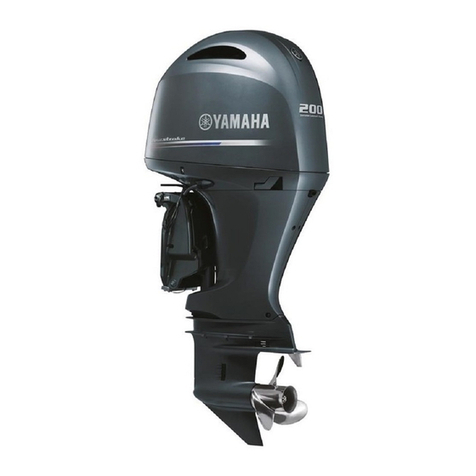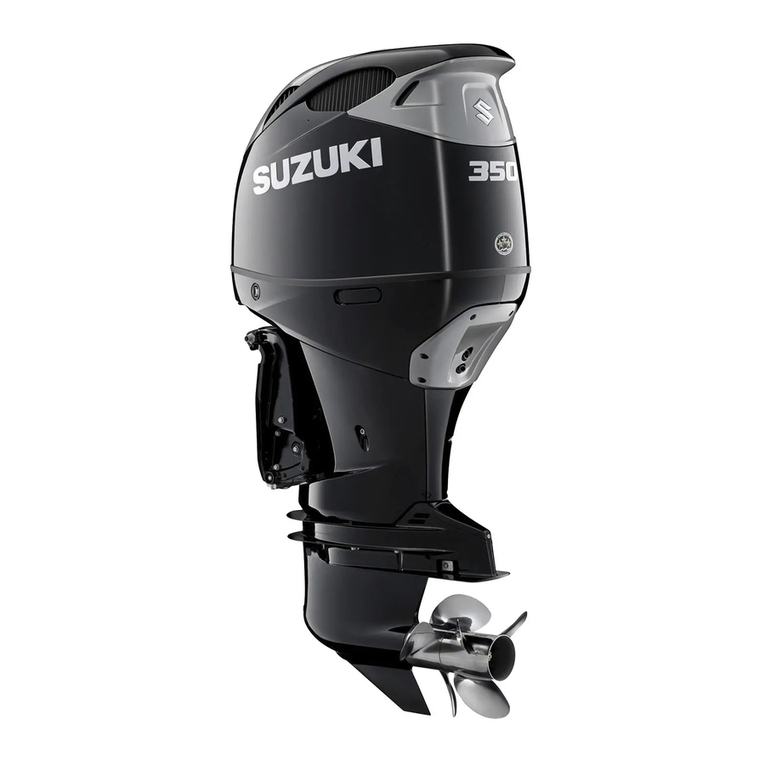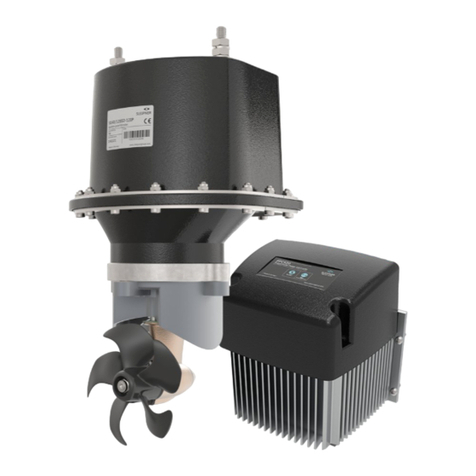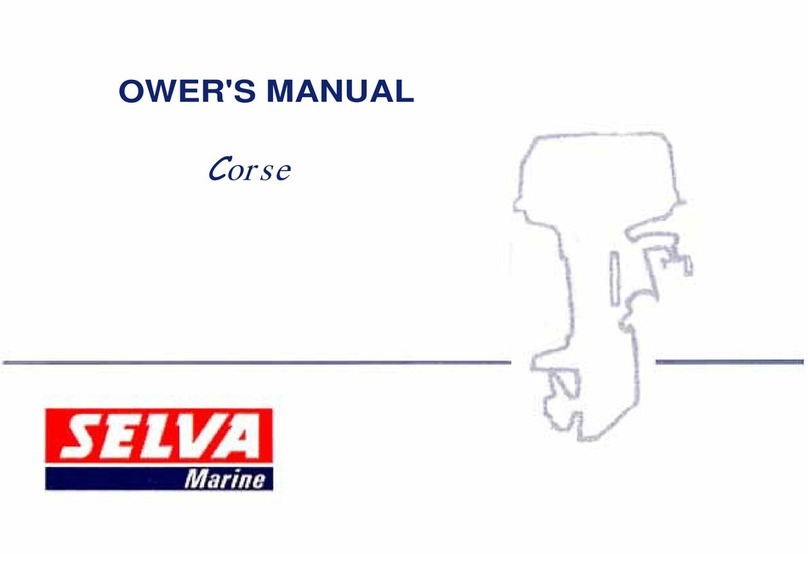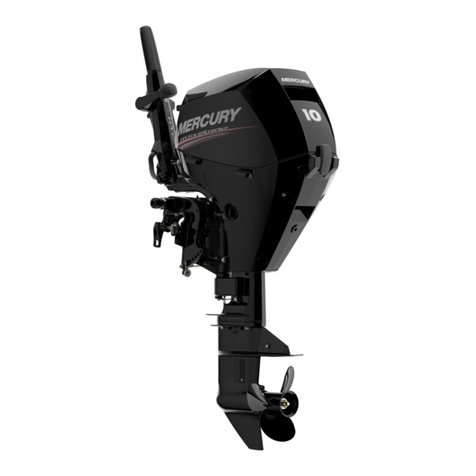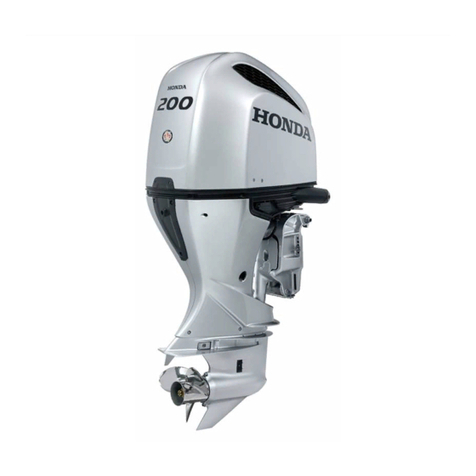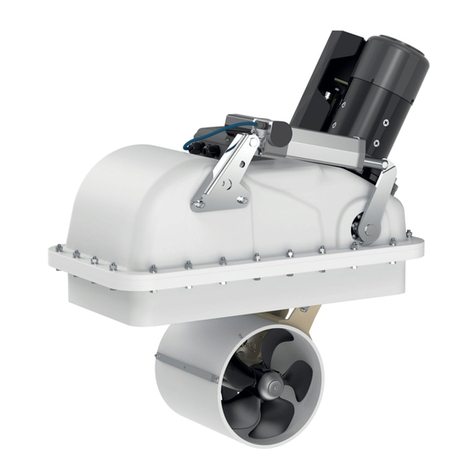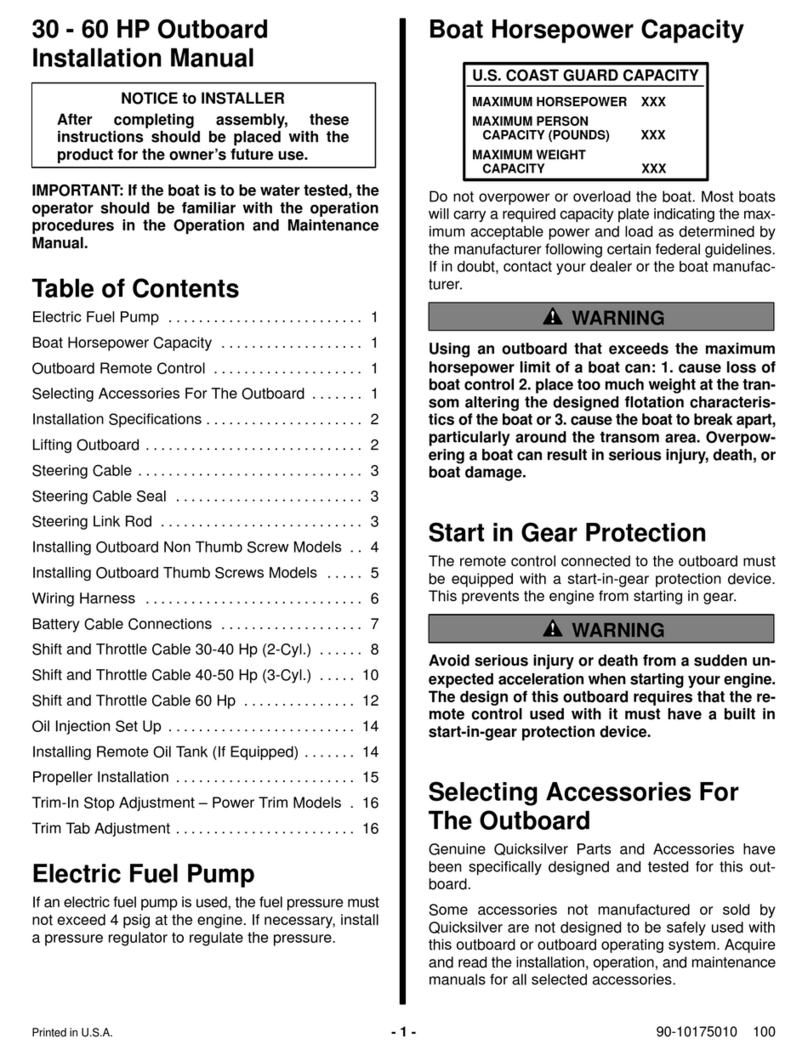
E
1-3
EMU00917
SAFETY
INFORMATION
8Before mounting or operating the out-
board motor, read this entire manual.
Reading it should give you an under-
standing of the motor and its operation.
8Before operating the boat, read any
owner’s or operator’s manuals supplied
with it and all labels. Be sure you under-
stand each item before operating.
8Do not overpower the boat with this out-
board motor. Overpowering the boat
could result in loss of control. The rated
power of the outboard should be equal to
or less than the rated horsepower capaci-
ty of the boat. If the rated horsepower
capacity of the boat is unknown, consult
the dealer or boat manufacturer.
8Do not modify the outboard. Modifications
could make the motor unfit or unsafe to
use.
8Never operate after drinking alcohol or
taking drugs. About 50% of all boating
fatalities involve intoxication.
8Have an approved personal flotation
device (PFD) on board for every occu-
pant. It is a good idea to wear a PFD
whenever boating. At a minimum, chil-
dren and non-swimmers should always
wear PFDs, and everyone should wear
PFDs when there are potentially haz-
ardous boating conditions.
8Gasoline is highly flammable, and its
vapors are flammable and explosive.
Handle and store gasoline carefully.
Make sure there are no gas fumes or
leaking fuel before starting the engine.
8This product emits exhaust gases which
contain carbon monoxide, a colorless,
odorless gas which may cause brain
damage or death when inhaled.
Symptoms include nausea, dizziness,
and drowsiness. Keep cockpit and cabin
areas well ventilated. Avoid blocking
exhaust outlets.
8Check throttle, shift, and steering for
proper operation before starting the
engine.
8Attach the engine stop switch lanyard to a
secure place on your clothing, or your
arm or leg while operating. If you acciden-
tally leave the helm, the lanyard will pull
from the switch, stopping the engine.
8Know the marine laws and regulations
where you will be boating - and obey
them. Refer to the “RULES OF THE
ROAD” section for basic boating rules.
8Stay informed about the weather. Check
weather forecasts before boating. Avoid
boating in hazardous weather.
8Tell someone where you are going: leave
a Float Plan with a responsible person.
Be sure to cancel the Float Plan when
you return.
8Use common sense and good udgment
when boating. Know your abilities, and be
sure you understand how your boat han-
dles under the different boating conditions
you may encounter. Operate within your
limits, and the limits of your boat. Always
operate at safe speeds, and keep a care-
ful watch for obstacles and other traffic.
8Always watch carefully for swimmers dur-
ing the engine operation.
8Stay away from swimming areas.
8When a swimmer is in the water near you
shift into neutral and shut off the engine.
Q
69L-9-12-1 3/5/02 5:00 PM Page 8
